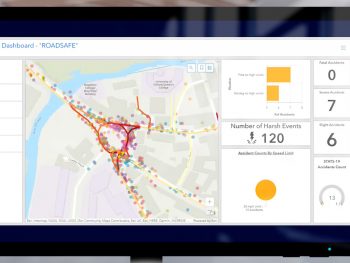Ford ‘Roadsafe’ dashboard to alert fleet drivers to high-risk roads
A new Ford digital tool currently in development could alert fleet drivers to accident blackspots, significantly reducing the number of road accidents.

The RoadSafe tool has been developed to process anonymised data and pinpoint where there is a higher chance of traffic incidents occurring
The RoadSafe tool has been developed by Ford and a UK government-funded consortium to process anonymised data from sources including connected vehicles, roadside sensors and accident reports via a smart algorithm and pinpoint where there is a higher chance of traffic incidents occurring.
This information can then be displayed on a map that identifies the level of risk and could also be used to warn drivers of hotspots, while notifying local authorities of work needed to address them.
For businesses and fleets, RoadSafe could be used to optimise driver routing to detour away from particular problem areas, or warn drivers when they are in riskier areas, reducing potential downtime resulting from incidents and helping to keep drivers safe.
“There are areas in every city where the chance of an incident is higher, whether it’s due to a poorly placed sign, an unrepaired pothole or junctions built to accommodate far less traffic than we have today. Ford can pinpoint the areas of concern, so drivers could be made more aware of them and authorities can address them,” said Jon Scott, City Insights project lead, Ford Mobility Europe.
The digital tool is the culmination of four years of research by Ford, including most recently a 20-month government-funded project conducted together with Oxfordshire County Council, Loughborough University and AI sensor specialists Vivacity Labs, with support from Transport for London and backing from Innovate UK.
Analysis has already been carried out in Greater London and RoadSafe is currently being tested by more than 200 vehicles in Oxfordshire and London. But Ford says it’s universally applicable and scalable for areas ranging from large cities to small towns.
In the future, such technology could also benefit passengers riding in autonomous vehicles by augmenting the onboard sensors and helping the vehicle anticipate hazardous situations even earlier and adapt operation accordingly.












